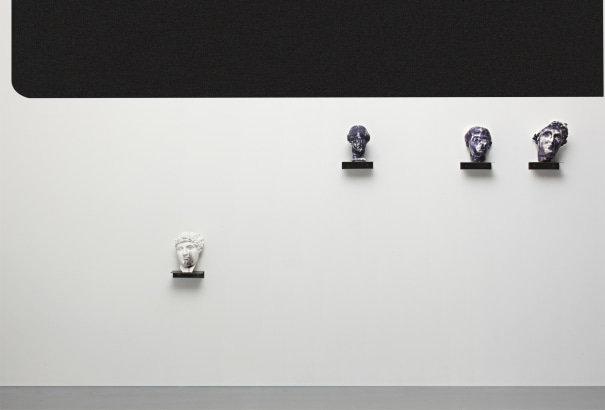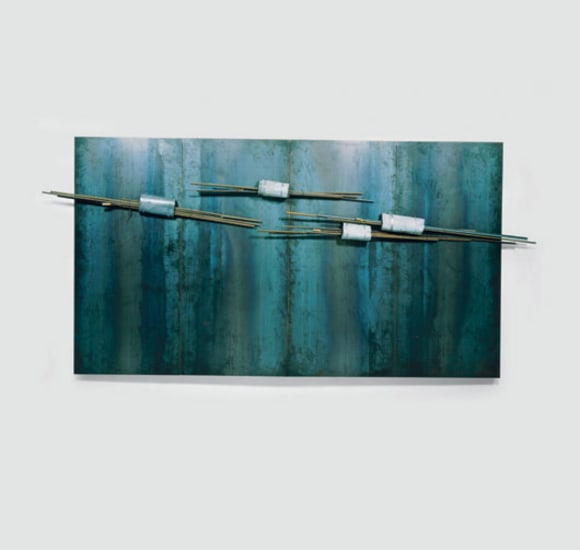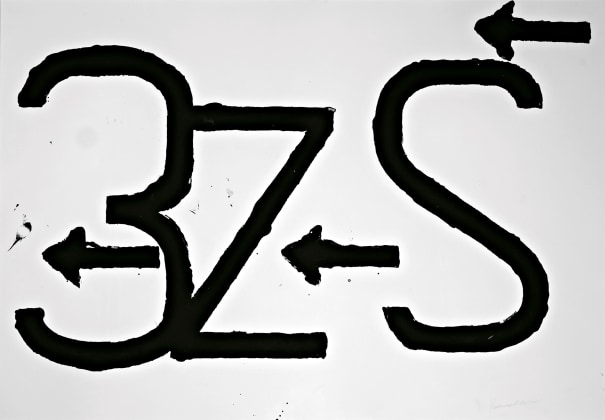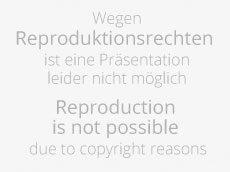(Piraeus 1936–2017 Rome) Untitled (2 parts), 1989, iron, lead, charcoal, paint, 200 x 360 cm Provenance: Galleria Sprovieri, Rome V. A. F. Foundation, Frankfurt Dorotheum, 24 November 2011, lot 1411 European Private Collection Exhibited: Milan, Padiglione d’Arte Contemporanea, Kounellis, 10 April - 31 May 1992, exh. cat. p. 150, no. 150 with ill. Rovereto (TN), MART - Museo di Arte Moderna e Contemporanea di Trento e Rovereto, Dalla Pop art alla Minimal. Opere dalla collezione permanente del Mart. 2005/2006 Rome, Ministero degli Affari Esteri, Viaggio nell’arte italiana 1950–80. Cento opere dalla Collezione Farnesina, 2007, exh. cat. with ill. Literature: E. Weiss, Wallraf-Richartz-Jahrbuch aus Westdeutschen Museen, 1991, Vol. 52, p. 364 M. Scheps, Kunst des 20. Jahrhunderts, Museum Ludwig Cologne, Taschen, Cologne 1996, p. 395 with ill. Kounellis has always called himself a painter, ticking according to the logic of painters, “painting” with everything: with horses and butterflies as well as with iron and coal. “I’m a painter: I’m a visionary, but I don’t paint. I would like to attain vision, which is what painting was at first. Vision is the painter’s craft” (Jannis Kounellis He wants to “get out of the picture”, out of the limits imposed by the canvas: he is a painter as a “builder of images”; wishing, as Germano Celant writes, “to embrace the world of the senses and join with the vital chaos of reality”. “The use of materials as an act of liberation — a way of to get out of the picture. With this painful fragmentation as point of departure, we try to find a centrality that is never renewed but which nevertheless contains a novel idea”. (Jannis Kounellis With his quest of exiting the canvas he wants in a way to connect to Pollock, Fontana and Burri, who, too, try and push painting beyond the constraints of this “centrality”: with Pollock removing the painting from the easel and laying it on the floor, making gesture the absolute protagonist, with Fontana going beyond the two-dimensional surface through his gestural cuts, and with Burri introducing and exploring the reality of materials. Painting can no longer be two-dimensional, it has depth, thickness. Kounellis has internalised these lessons but take leave of the canvas, expanding its space and going more and more towards the theatre. For Arte Povera, leaving the painting means “going towards the object”, “making a physical, object-based art”, where the artist “does not represent but presents”. So Kounellis abandons the canvas in favour of iron plates on which he places traces of life such as sacks or clothes; because the painting limits the artist, oppresses his creative impulse, you have to go beyond the easel; if you want to meet reality, you have to overcome and go beyond the closed space of a frame. Faithful for about sixty years to his language, this great artist has always maintained a particular spectrum of colours — across the whole range of grey, rust and black smoke — which makes him immediately recognisable. As for the poetics pursued and the materials used, there is: iron, coal, burlap sacks, rags, stones, fire, earth. Kounellis is also continuously in dialogue with some of his colleagues including Fabro, Zorio, Paolini Penone, Pistoletto. He subtracts ordinary objects from the anonymous repetition of the capitalist machine of production to make them unique and irreplaceable. “I have seen the sacred”, he says, “in everyday objects”. Kounellis called himself a romantic, and was a lover of the 19th century epic. Iron, lead, coal, burlap sacks, and sheet metal connect the present and the past. In his work, the reference to the original is expressed in a simple and minimal way and brings us back to the world of both rural and industrial work.
(Piraeus 1936–2017 Rome) Untitled (2 parts), 1989, iron, lead, charcoal, paint, 200 x 360 cm Provenance: Galleria Sprovieri, Rome V. A. F. Foundation, Frankfurt Dorotheum, 24 November 2011, lot 1411 European Private Collection Exhibited: Milan, Padiglione d’Arte Contemporanea, Kounellis, 10 April - 31 May 1992, exh. cat. p. 150, no. 150 with ill. Rovereto (TN), MART - Museo di Arte Moderna e Contemporanea di Trento e Rovereto, Dalla Pop art alla Minimal. Opere dalla collezione permanente del Mart. 2005/2006 Rome, Ministero degli Affari Esteri, Viaggio nell’arte italiana 1950–80. Cento opere dalla Collezione Farnesina, 2007, exh. cat. with ill. Literature: E. Weiss, Wallraf-Richartz-Jahrbuch aus Westdeutschen Museen, 1991, Vol. 52, p. 364 M. Scheps, Kunst des 20. Jahrhunderts, Museum Ludwig Cologne, Taschen, Cologne 1996, p. 395 with ill. Kounellis has always called himself a painter, ticking according to the logic of painters, “painting” with everything: with horses and butterflies as well as with iron and coal. “I’m a painter: I’m a visionary, but I don’t paint. I would like to attain vision, which is what painting was at first. Vision is the painter’s craft” (Jannis Kounellis He wants to “get out of the picture”, out of the limits imposed by the canvas: he is a painter as a “builder of images”; wishing, as Germano Celant writes, “to embrace the world of the senses and join with the vital chaos of reality”. “The use of materials as an act of liberation — a way of to get out of the picture. With this painful fragmentation as point of departure, we try to find a centrality that is never renewed but which nevertheless contains a novel idea”. (Jannis Kounellis With his quest of exiting the canvas he wants in a way to connect to Pollock, Fontana and Burri, who, too, try and push painting beyond the constraints of this “centrality”: with Pollock removing the painting from the easel and laying it on the floor, making gesture the absolute protagonist, with Fontana going beyond the two-dimensional surface through his gestural cuts, and with Burri introducing and exploring the reality of materials. Painting can no longer be two-dimensional, it has depth, thickness. Kounellis has internalised these lessons but take leave of the canvas, expanding its space and going more and more towards the theatre. For Arte Povera, leaving the painting means “going towards the object”, “making a physical, object-based art”, where the artist “does not represent but presents”. So Kounellis abandons the canvas in favour of iron plates on which he places traces of life such as sacks or clothes; because the painting limits the artist, oppresses his creative impulse, you have to go beyond the easel; if you want to meet reality, you have to overcome and go beyond the closed space of a frame. Faithful for about sixty years to his language, this great artist has always maintained a particular spectrum of colours — across the whole range of grey, rust and black smoke — which makes him immediately recognisable. As for the poetics pursued and the materials used, there is: iron, coal, burlap sacks, rags, stones, fire, earth. Kounellis is also continuously in dialogue with some of his colleagues including Fabro, Zorio, Paolini Penone, Pistoletto. He subtracts ordinary objects from the anonymous repetition of the capitalist machine of production to make them unique and irreplaceable. “I have seen the sacred”, he says, “in everyday objects”. Kounellis called himself a romantic, and was a lover of the 19th century epic. Iron, lead, coal, burlap sacks, and sheet metal connect the present and the past. In his work, the reference to the original is expressed in a simple and minimal way and brings us back to the world of both rural and industrial work.






.jpg)








Try LotSearch and its premium features for 7 days - without any costs!
Be notified automatically about new items in upcoming auctions.
Create an alert